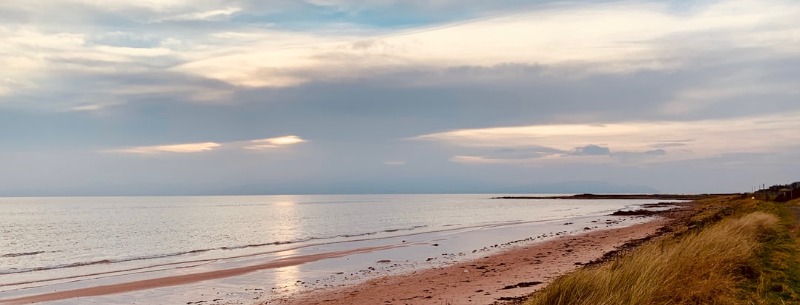Best Beaches in Texas 2024
The coastline of south Texas, which state residents half-jokingly refer to as the “Third Coast,” curves from Port Arthur on the Louisiana border on the much-touristed Gulf Coast down past the urban monster of Houston, to the Rio Grande, the border with Mexico.
Geographically and culturally, this area has two distinct faces.
To the east are the seaside resorts of the prairie, rolling away from the hills and forests of east Texas. Much of the coast is feeling the strain of rapid property development, but there are still unspoiled stretches along the Padre Island National Seashore.
In the south, a Hispanic influence spreads north from the fertile Rio Grande Valley. The border towns here have little charm and are only of interest as points of entry into Mexico for cheap shopping and entertainment.
The best beaches in Texas are centered around three locales: Galveston, Corpus Christi (gateway to Padre and Mustang islands) and South Padre Island.
South Padre Island
South Padre Island is a 34-mile-long barrier island at the southern tip of Texas. Unlike North Padre Island, home of Padre Island National Seashore, South Padre Island is a resort beach, with hotels, condominiums, restaurants, gift shops and so on.
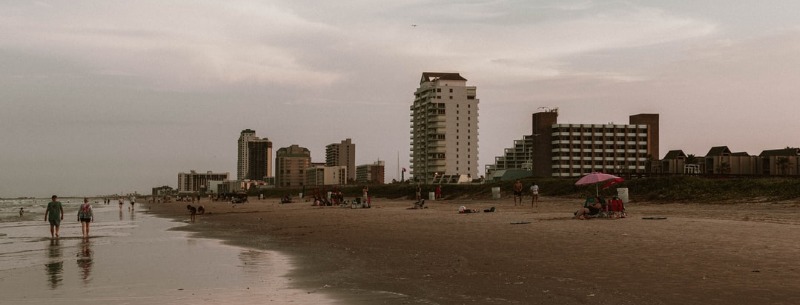
The Laguna Madre bay separates South Padre Island from the Texas mainland and is recognized as one of the world’s top windsurfing destinations.
The sailing season off South Padre runs from September through May. Water depth varies from three to five feet, daytime winds average 18 mph, and the average yearly temperature is in the 70s. Novices and pros come to sail the bay, the Jetties, Boca Chica, and the Ditch, site of some of the fastest windsurfing speeds in North America.
Kiteboarding is fast becoming the hottest new water sport and South Padre Island offers year-round, world-class kiteboarding conditions.
The Laguna Madre’s waist deep water and consistent winds offer beginner to expert riders near perfect flat-water conditions to hone their skills. Advanced kiteboarders will enjoy riding the Laguna Madre and the waves of the Gulf of Mexico.
The Rio Grande Valley offers great golfing for handicappers of all levels. Keep in mind that our temperate climate allows golfers to tee off 12 months a year. The closest championship course is the South Padre Island Golf Club, located 15 minutes away in Laguna Vista.
South Padre is definitely more for the resort-lovers than those who want miles and miles of deserted beaches. But that’s the preference of many people anyway, people who enjoy sun, sand and surf but also want restaurants, nightclubs and other amenities close by.
Isla Blanca County Park on the southern tip of the island provides a break from the resort atmosphere, for those who want a little less clutter.
Corpus Christi
The unabashed resort town of Corpus Christi is reached along the coast on Hwy-35 from Houston or Galveston, or on I-37 from San Antonio.
Apart from fishing, sailing and water sports across the channel on Padre Island, there’s not a great deal to do in Corpus Christi.
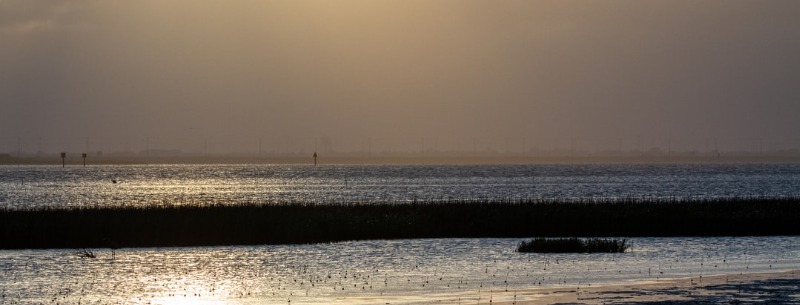
The impressive collection of the Philip Johnson-designed South Texas Institute for the Arts, 1902 N Shoreline Blvd, includes pieces by Monet and Picasso.
Further along N Shoreline Boulevard, at no. 2710, is the massive Texas State Aquarium, which nonetheless feels cramped compared to the aquarium in Galveston.
There are two main beaches within Corpus Christi city limits:
Corpus Christi Beach is on the north side of the ship channel, connected to Downtown Corpus Christi by the Harbor Bridge. It’s known to most longtime residents as “North Beach,” but its official name is Corpus Christi Beach. The beach itself is one of the less-trafficked in the area, but is very convenient to all of Corpus Christi.
McGee Beach is a very small beach along the Corpus Christi Seawall, between the Holiday Inn on Shoreline Boulevard and the first T-head in the city marina. Concrete jetties jut into Corpus Christi Bay and serve as breakwaters.
This beach is packed on holidays, and many days you can find families with young children. It’s a good beach for younger kids because the water is very shallow here – and because it’s a small area, making it easy to keep track of the kids.
Galveston
In 1890, Galveston – on the northern tip of Galveston Island, the southern terminus of I-45 – was a thriving port, far larger than Houston fifty miles northwest; many newly arrived European immigrants chose to stay here in the so-called “Queen of the Gulf.”
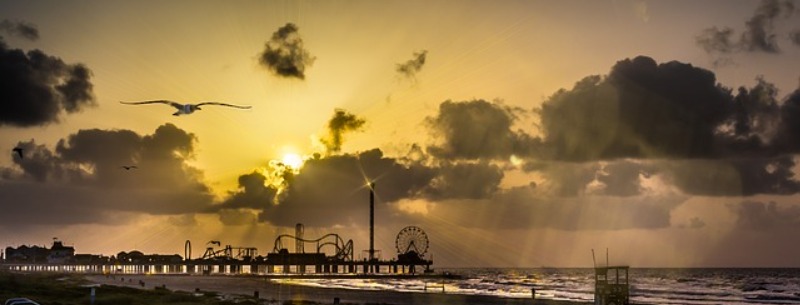
However, the building of Houston’s Ship Canal, after the hurricanes of 1900 killed more than six thousand people and washed away much of the land, left the coastal town to fade slowly away. Thanks to its pretty historic district and its popularity with Houston residents seeking a summer escape, Galveston’s undergone a certain revitalization.
The Strand downtown, the 19th-century “Wall Street of the Southwest,” has been fitted with gaslights, upmarket shops, restaurants and galleries.
Between the Strand and the beaches, old houses are everywhere, among them the ostentatious Bishop’s Palace, 1402 Broadway, with its stained glass, mosaics and marble; and the antebellum Ashton Villa , 2328 Broadway, which shows a film about the 1900 hurricane.
On the west side of town, Moody Gardens, is an environmental research facility where you can happily while away a few hours.
The complex is centered around three giant glass pyramids: the Rainforest Pyramid houses exotic plants, birds and fish from around the world; the Discovery Pyramid is a good-quality science museum with an IMAX cinema; and the impressive Aquarium Pyramid is one of the largest aquariums in the world.
Also in the ever-growing complex are themed outdoor gardens, pleasant walking trails along the shore of scenic Offatt’s Bayou, where you can take a cruise on a paddlewheeler, and Palm Beach, a popular spot for families where kids can play on a giant yellow submarine.
The downtown beaches of Seawall Boulevard are a constant reminder of Galveston’s struggle simply to exist: murky, rocky and protected behind a ten-mile-long seawall from the ever-encroaching tides and the threat of further hurricanes.
Stewart Beach Park, the most convenient beach for downtown, is geared toward family fun and gets very crowded.
The wide R.A. Apfell Park, further east, is marginally quieter during the week, but has live music some weekends and a lively bar. Both of these beaches charge $5 per car.
At slightly more than 2,000 acres in size, Galveston Island State Park is on the west end of Galveston Island. The camping areas contain shelters and sites with water and electricity. There are four miles of hiking trails. Great spot for quiet beaches, beachcombing, birdwatching and stargazing.
Padre Island National Seashore
Padre Island National Seashore is not quite as unspoiled these days as its reputation might suggest, with its ranks of condos advancing steadily, but it remains a good destination for bird-watching, beachcombing and camping. Pick up details at the visitor center at 20402 Park Road 22.

Malaquite Beach and Bird Island Basin are two of the popular spots on the island.
Bird Island Basin is on the inward side of the island on the Laguna Madre, a popular fishing and windsurfing spot.
Many beachgoers to Padre Island National Seashore consider Malaquite Beach the best beach in the park. Driving is not allowed on this beach and large crowds are uncommon except at the busiest times of the year.
If you want real isolation, you can drive down-island to the most remote parts of the park. Four-wheel drives only can make the trip in the soft sands. The Down Island trip begins near the 5-mile marker past Malaquite Beach and South Beach.
Swimming, windsurfing, fishing, bird watching and kayaking are some of the most popular activities on Seashore. A number of guided tours and children’s programs are available throughout the year.
Visitors should always keep an eye out for jellyfish and man-o-war, which sometimes wash up on the beaches and are common in the waters.
The park is easily accessed by car, but cab services in Corpus Christi will make the trip for around $30. The park itself is open 24 hours, with a $10 admission charge per vehicle, good for one week.
Note that an impassable canal divides the island, meaning that the pricier and much more touristy South Padre Island in the south can only be reached from the mainland – it’s a three-hour drive from Corpus Christi.
Mustang Island
Mustang Island State Park is 3954 acres with about 5 miles of beach on the Gulf of Mexico in Nueces County, south of Port Aransas. It was acquired from private owners in 1972 and opened to the public in 1979.
Mustang Island is a coastal barrier island with a unique and complicated ecosystem, dependent upon sand dunes. The height of well-vegetated dunes may reach 35 feet, though 15-20 feet is average.
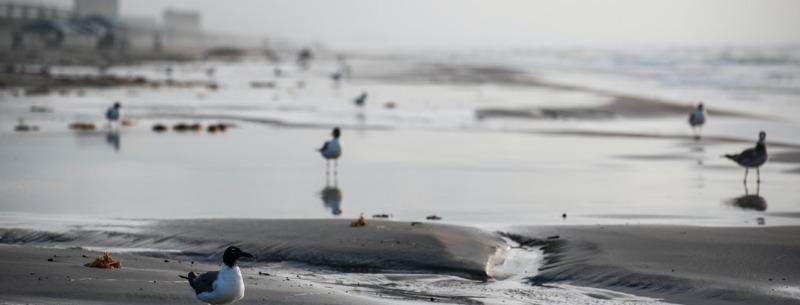
Mustang Island activities include camping, picnicking, fishing, swimming, hiking and mountain biking on 5 miles of open beach, sunbathing, hiking, surfing, and excellent birding, especially during spring and fall migrations.
Facilities near the park headquarters include campsites with water, electricity; shade shelters; and restrooms with showers. Facilities at the north end of the developed area (day-use only) include ample parking, portable toilets, and rinsing showers.
Facilities south of the main swimming area include open-beach; primitive campsites (undesignated); widely spaced convenience stations with portable toilets, rinsing showers, and bulk water supply.
The 5-mile open beach allows hiking and mountain biking.
To reach the park, travel southeast from Corpus Christi on State Highway 358 to Padre Island; cross the JFK Causeway; continue one mile to traffic light; turn left onto State Highway 361 (used to be Park Road 53), and go 5 miles north to park headquarters for a total distance of about 22 miles.
Source & more on the Best Beaches in Texas from Texas Capital
